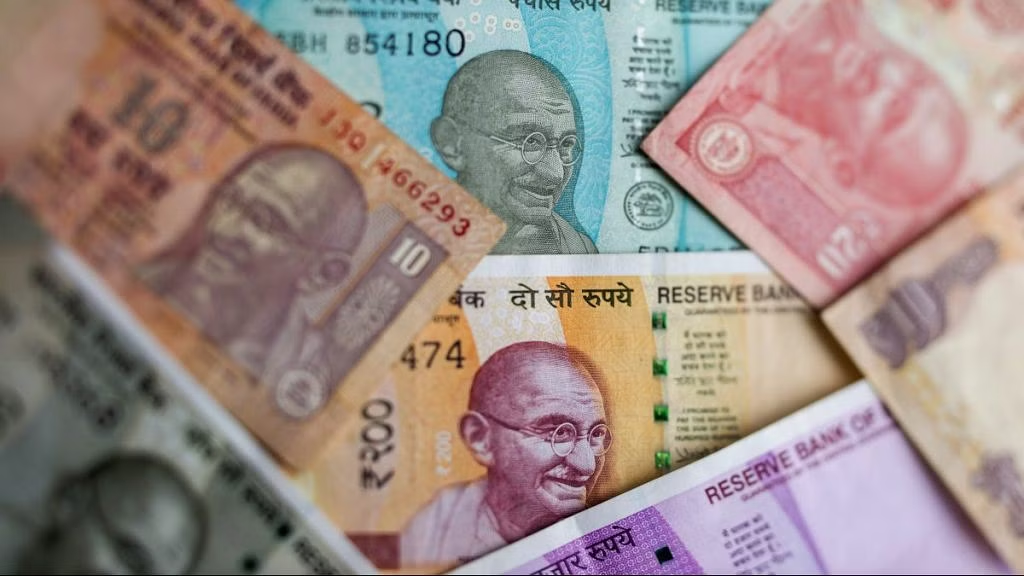Amidst a barrage of negative cues, the Indian rupee has managed to evade plummeting to a record low, showcasing resilience in the face of economic headwinds. In this article, we delve into the myriad factors influencing the performance of the Indian currency, analyzing its trajectory amidst challenging circumstances.
Factors Influencing the Indian Rupee

The value of the Indian rupee is influenced by a complex interplay of economic indicators and geopolitical factors. Economic fundamentals such as inflation rates, monetary policy decisions, and trade balances play a significant role in determining currency strength. Geopolitical tensions, global economic trends, and investor sentiment further contribute to market dynamics.
Impact of Inflation
Inflation rates exert a considerable influence on currency valuation. Higher inflation erodes purchasing power, leading to depreciation in the currency. Recent inflation trends in India have been a cause for concern, with rising prices putting pressure on the rupee. The Reserve Bank of India’s efforts to manage inflation through monetary policy measures have been closely watched by market participants.
Monetary Policy and Interest Rates

The Reserve Bank of India’s monetary policy decisions, particularly regarding interest rates, have a direct impact on the rupee’s value. Interest rate hikes attract foreign investment, boosting demand for the currency. Conversely, rate cuts can lead to depreciation as investors seek higher yields elsewhere. Recent policy shifts by the central bank have been aimed at balancing growth objectives with inflation management.
Global Economic Environment
The Indian rupee is also influenced by global economic trends, especially those in major economies such as the United States, Eurozone, and China. Developments such as changes in interest rates, GDP growth forecasts, and geopolitical tensions can affect investor sentiment and capital flows. Recent uncertainties surrounding global trade and economic recovery have added to volatility in currency markets.
Trade Balance and Current Account Deficit
India’s trade balance and current account deficit are critical determinants of the rupee’s value. A widening trade deficit puts pressure on the currency, as more rupees are required to finance imports. Recent data reflecting India’s trade situation has highlighted challenges in achieving a balance between exports and imports, impacting the rupee’s performance.
Foreign Investment Inflows
Foreign investment, both in the form of foreign direct investment (FDI) and foreign institutional investment (FII), plays a vital role in supporting the Indian rupee. Positive investor sentiment and confidence in the Indian economy attract capital inflows, strengthening the currency. Recent trends in FDI and FII have underscored investor interest in India’s growth prospects despite global uncertainties.
Political Stability and Market Confidence
Political stability is another crucial factor influencing market confidence and, by extension, currency stability. Uncertainties surrounding government policies and leadership can erode investor trust, leading to capital outflows and currency depreciation. Recent political developments in India have been closely monitored for their potential impact on market sentiment.
Technical Analysis of Currency Trends
Technical analysis involves the study of price charts and trading patterns to forecast future price movements. Analysts use various indicators such as moving averages, Fibonacci retracements, and support/resistance levels to identify trends and potential reversal points. Recent technical analysis of the Indian rupee has provided insights into short-term market dynamics.
Market Sentiment and Speculation
Market sentiment plays a significant role in currency trading, often driving short-term fluctuations. Positive sentiment can lead to buying interest and currency appreciation, while negative sentiment can trigger selling pressure and depreciation. Speculative activity, fueled by news and rumors, further amplifies volatility in currency markets.
Government Interventions
Governments often intervene in currency markets to stabilize exchange rates and mitigate excessive volatility. Intervention measures may include direct currency purchases/sales, capital controls, and monetary policy adjustments. The Indian government and the Reserve Bank of India have employed various intervention strategies to manage the rupee’s value amidst challenging market conditions.
Comparative Analysis with Other Currencies
Comparing the Indian rupee’s performance against other major currencies provides valuable insights into its relative strength and weaknesses. Analyzing exchange rate movements and economic fundamentals vis-à-vis currencies such as the US dollar, euro, and yen helps assess the rupee’s competitiveness and resilience in global markets.
Expert Opinions and Forecasts
Economists and analysts offer diverse perspectives on the future trajectory of the Indian rupee, considering the multitude of factors influencing its performance. Forecasting currency movements, however, remains challenging due to the inherent unpredictability of market dynamics. Uncertainties surrounding global economic recovery, geopolitical tensions, and domestic policy decisions further complicate forecasting efforts.
Conclusion
Despite facing a slew of negative cues, the Indian rupee has managed to avoid a record low, showcasing resilience amidst challenging economic conditions. Factors such as inflation, monetary policy, global economic trends, and investor sentiment continue to shape the currency’s trajectory. While uncertainties persist, the Indian economy’s underlying strengths provide a foundation for cautious optimism regarding the rupee’s future performance.
FAQs
- Is the Indian rupee likely to strengthen or weaken in the near term?
- The outlook for the Indian rupee








